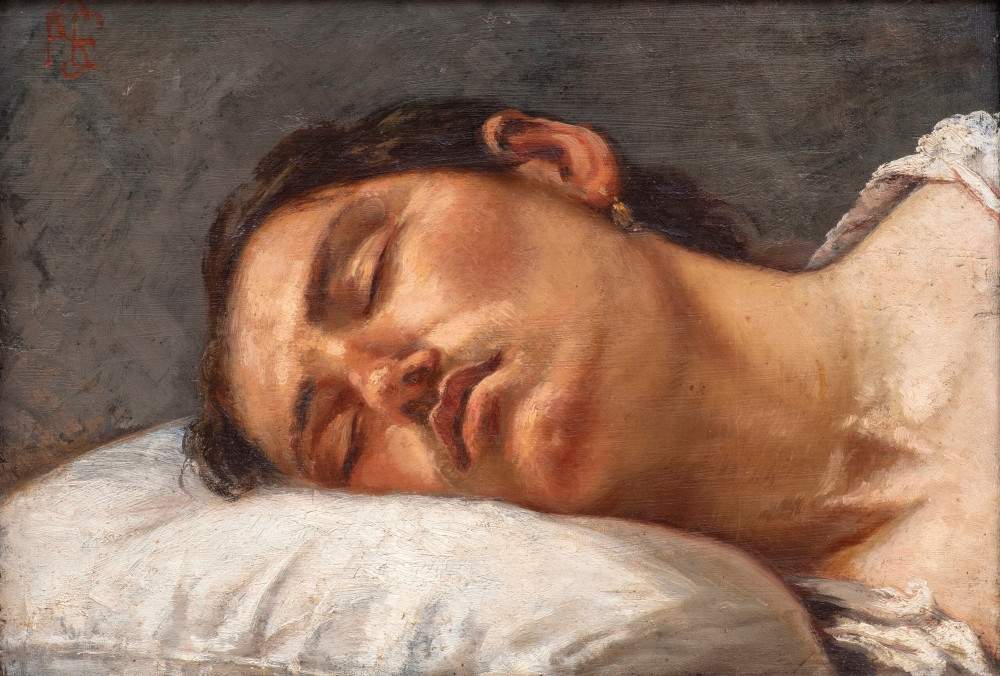Castromediano Museum dedicates an exhibition to Paolo Emilio Stasi, painter and archaeologist in Terra d'Otranto
The Castromediano Museum in Lecce hosts from December 22, 2022 to January 31, 2023 the exhibition Paolo Emilio Stasi. Painter and Archaeologist in the Terra d’Otranto between the Nineteenth and Twentieth Centuries, promoted by the Lecce Biblio-museum Cluster and the Presidency of the Regional Council of Puglia, coordinated by Luigi De Luca, director of the Lecce Biblio-museum Cluster and curated by Brizia Minerva, Annalucia Tempesta, Michele Afferri and Salvatore Bianco.
On the occasion of the centenary of the death of Paolo Emilio Stasi (Spongano, 1840 - 1922), the Castromediano Museum dedicates an exhibition project to one of the most stimulating and least known personalities of Terra d’Otranto culture in the late 19th and early 20th centuries. A painter and archaeologist, Stasi is at the center of an exhibition that includes works of art, archaeological finds, photographs, documents and other materials from private collections and the collections of the Castromediano Museum. The works, which come from the heirs’ collections, have undergone major restoration work by the museum, carried out by restorers Mary Coppola and Giuseppe Tritto. Thirty-five works including paintings on canvas, pressed cardboard, plywood and drawings on paper have been involved in conservation restoration operations from September 2022 to the present.
Made possible thanks to the willingness of the heirs and in collaboration with the ABAP Superintendency for the provinces of Brindisi, Lecce and Taranto, the Teatro Pubblico Pugliese and the Province of Lecce, the exhibition project was realized thanks to the collaboration of the company Esterno Notte, an association that operates following an ethical line of enhancing the architectural heritage, the natural landscape and the cultural heritage, in respect and protection of nature and the territory, through the proposal of artistic installations.
An exponent of late 19th-century Neapolitan painting, Paolo Emilio Stasi trained in Naples, where he was a pharmacy student in the years 1865-66, with the major masters of that period, including Gioacchino Toma from Salento. He returned to Terra d’Otranto and taught drawing at the Real Ginnasio “Capece” high school in Maglie. Stasi’s pictorial production , which includes portraiture, sacred subjects, landscapes and still lifes, is little known to both scholars and the general public. He was a passionate naturalist, open to the new currents of positivist and evolutionist thought, in the wake of Charles Darwin’s theories. From 1870 he became fascinated by the paleontological research conducted in Terra d’Otranto by Ulderico Botti, a Tuscan by birth and prefectural councilor in Lecce, trained at the Chair of Anthropology in Florence. Following in Botti’s footsteps, Stasi discovers oxiferous breccias on the cliffs of Castro (rubble crumbled by the cold of the last glacial, then carried by the waters along with fossil faunal remains on the ground and then cemented into the local red earths).
He also discovered the prehistoric deposit of Grotta Romanelli, on which he carried out essays later published in 1904 together with Ettore Regàlia of the Palaeontology Cabinet of Florence. The discovery of the first Upper Paleolithic site in Italy was denied in 1905 by Academic Science represented by Luigi Pigorini of the Chair of Palethnology in Rome. Nevertheless, the discovery of Stasi-Regàlia would be recognized by many scholars, particularly following excavations resumed in Romanelli by Baron Gian Alberto Blanc in 1914 on ministerial commission. The latter recognized the d Stasi-Regàlia thesis by ending the dispute between the Chair of Palethnology in Rome and the Chair of Anthropology in Florence, to which Stasi and Regàlia belonged. Because of that scientific dispute, Stasi, from 1904 to 1914, went through a period of marginalization.
Today the Castromediano Museum intends to recover the figure of Stasi as a pioneer of prehistoric studies (Grotta Romanelli, Grotta Zinzulusa in Castro, Cunicoli dei Diavoli in Porto Badisco) and as an exponent in Terra d’Otranto of Neapolitan painting in the late 19th - early 20th century.
“This exhibition is a project that unites the vocations of the Castromediano Museum, from archaeology to art history, from attentions to the archives, to the commitment on restoration: therefore, the tribute to Stasi is a true paradigm, which makes our commitment to study and research a further starting point for new visions open to the community,” said Luigi De Luca.
The exhibition can be visited daily from Tuesday to Sunday.
 |
| Castromediano Museum dedicates an exhibition to Paolo Emilio Stasi, painter and archaeologist in Terra d'Otranto |
Warning: the translation into English of the original Italian article was created using automatic tools. We undertake to review all articles, but we do not guarantee the total absence of inaccuracies in the translation due to the program. You can find the original by clicking on the ITA button. If you find any mistake,please contact us.



























